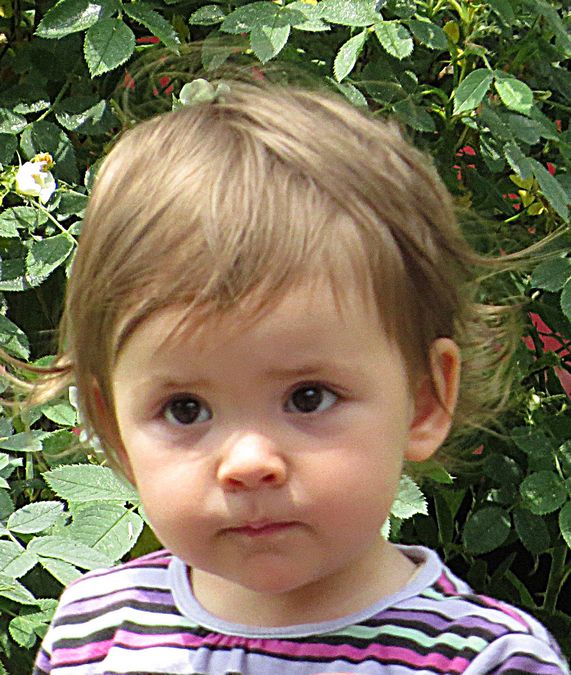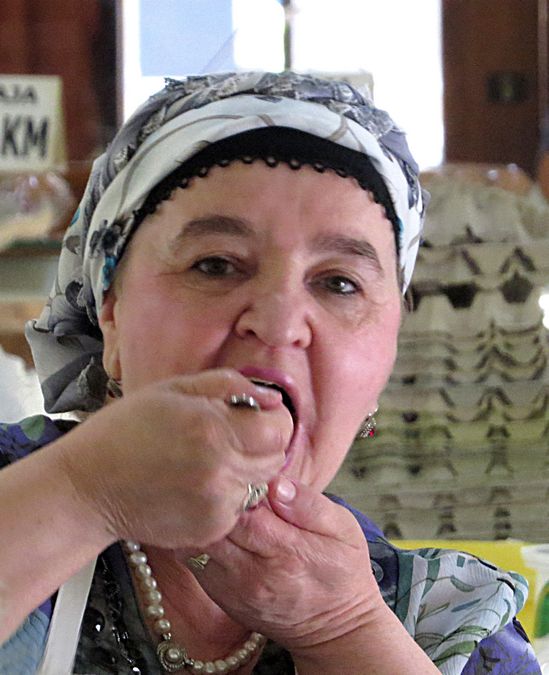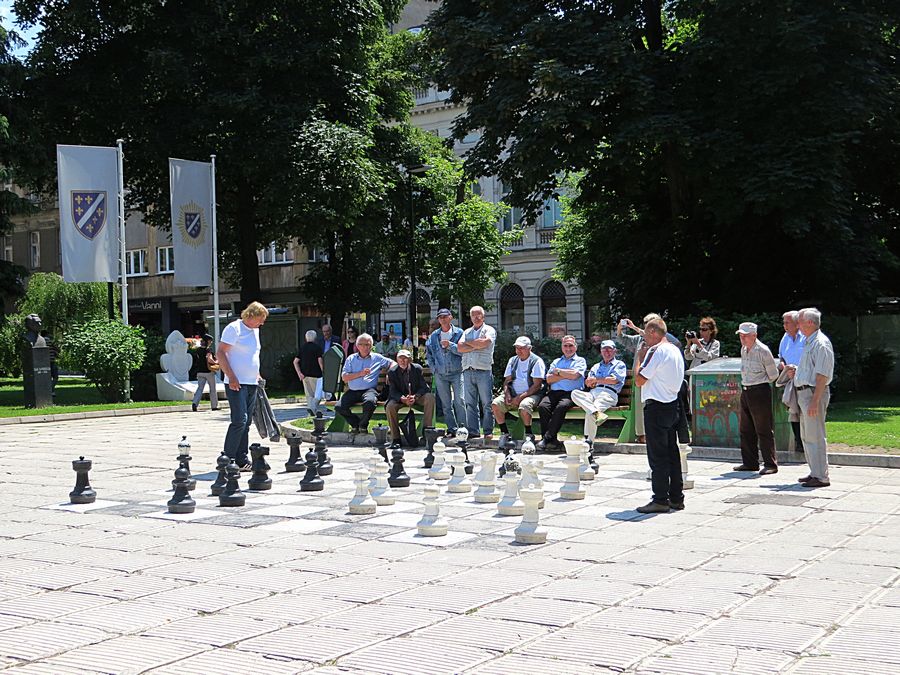Crossroads of the Adriatic Tour
Albania, Croatia, Montenegro, Bosnia and Herzegovina, and Slovenia
May 23 - June 12, 2015
Part Four - Bosnia and Herzegovina
Page Nine - Sarajevo continued

Note the 1990s war damage on this apartment building in Sarajevo.
So many buildings in the city
still show the scars of war.

Child playing in the small park in front the apartment building shown above.

The Sarajevo Cathedral (Cathedral of Jesus' Heart) on Ferhadija Street.
To the right in the photo
is the Srebenica Exhibition. A few of us
watched 2 heartwrenching
videos inside this museum about the Siege
of
Sarajevo and the
Srebrenica genocide.
The genocide
was the killing, in July 1995, of more than 8,000 Muslim Bosniaks,
mainly men and boys, in and around the town of Srebrenica during the Bosnian
War.
The killings were perpetrated by units of the Bosnian Serb Army
under the
command of
General Ratko Mladic and a paramilitary unit from Serbia.
In April 1993,
the UN had declared the besieged enclave of Srebrenica
a safe area under UN protection.
In July 1995 the Dutch soldiers there did not
prevent the town's capture and the subsequent massacre.
In 2005, Kofi-Annan, then Secretary-General of the UN, described the
mass murder as the worst crime
on European soil since WWII and wrote that,
while blame lay "first and foremost with those who planned and carried
out the massacre and those who assisted and harbored them,"
the UN had "made serious errors of judgment, rooted in a philosophy of
impartiality," describing Srebrenica as a tragedy that would haunt the history
of the UN forever. We took a guided tour in this museum, and our young tour
guide was wearing
a T shirt that said: "UN - United Nothing."
She said the 1990s
war period is not being
taught in schools and stated that her country should
not act like the war did not happen and
must talk about it.

Chef at a local restaurant in Old Town fixing us lunch

View from an overlook of part of Sarajevo and the Miljacki River

View of a Muslim cemetery & one of the hillsides covered with homes.
The cemetery did not exist before the Siege.

One night the tour group split into smaller groups, each to have dinner
with a local family in their home. Here is the family I was with in an apt. building.
The young woman on the left was learning how to be a tour guide.
Her brother already is one. Her son and her mother (who did the cooking)
are to her right. They are looking at some of the small gifts
we brought them. Note the Broncos pencils sitting on the table.

Night time view of Sarajevo from my hotel room.
Gazi Husrev-Bey Mosque is to the left.

Front of home where Sarajevo Tunnel (Tunnel of Hope) was built.
The Sarajevo Tunnel was mainly constructed between May 1992
and June 1993,
during the Siege of Sarajevo in the midst of the Bosnian War.
It was built in order to link Sarajevo, which was entirely cut off by
Serbian forces, with
Bosnian-held territory on the other side of the Sarajevo
Airport, an area controlled
by the UN. The tunnel allowed food, war supplies,
and humanitarian aid to come into the city,
and people to get out.
The tunnel became a major way
of bypassing the international arms embargo
and providing the city defenders with weaponry.

After the war, The Sarajevo Tunnel Museum was built onto the historic
private house whose cellar
served as the entrance to the Sarajevo Tunnel.
The tunnel ran under the Sarajevo Airport runway.

Inside the Tunnel
The tunnel was dug by hand, with shovel and pick, and wheelbarrows were
used to
carry debris away. The tunnel was dug 24 hours a day.

A Sarajevo Rose - After the war, about 1000 of the impact craters
in the streets were filled with red resin to create
a memorial. Only a few remain today due to the rebuilding of the City.
This one is near
the Tunnel
of Hope.

More war damaged apartment buildings that we saw driving back
to downtown Sarajevo
from the Tunnel of Hope.

Memorial to the Children of Sarajevo.
The glass structure in the center represents
symbolically a sandcastle, but one that will never be finished,
as the innocent play
of children
was cut short by untimely death.
About 1000 children were killed during
the Siege of Sarajevo.

Yellow Market Hall along Ferhadija Street.
We went inside to taste some local products.

A vendor inside the yellow building tasting some of what she was selling.

Liberation Square with the Serbian Othodox Cathedral in the background,
completed in 1869.

Two men playing chess in Liberation Square
with others gathered to watch the game.

View from outside Hotel Europe which shows the ruins of a 16th century
Ottoman caravanserai (Inn), called Taslihan.
It hosted passing travelers, traders, and merchants.

Bosnian girl
Link to Part Five, Page Ten - Back to Croatia
Pat's Home Page